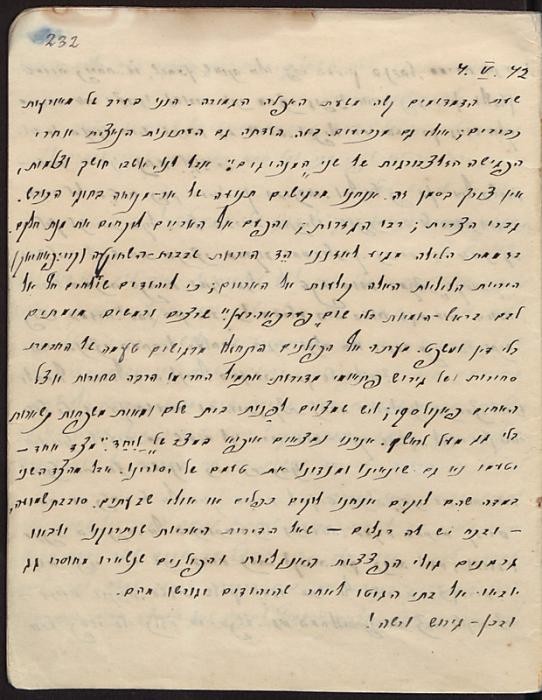
Writers and Poets in the Ghettos
Under terrible living conditions in the ghettos and facing the constant threat of deportation, Jews sought to preserve their humanity and their culture through song and verse.
Background
Beginning in 1939, German authorities segregated Polish Jews in ghettos, or restricted zones. Originally instituted to separate Jews from the non-Jewish population, ghettos later served as staging grounds for the annihilation of European Jewry.
Under terrible living conditions and the constant threat of deportation, Jews sought to preserve their humanity and their culture through song and verse.
Krakow
The Yiddish poem "Es Brent" (It's Burning) by Mordecai Gebirtig (written in 1938 in response to a pogrom in Poland) became the anthem of the underground resistance in the Krakow ghetto. Gebirtig continued to write both after he fled from Krakow to nearby Lagiewniki and after he was forced to move from Lagiewniki into the Krakow ghetto.
Vilna
In the Vilna ghetto and in labor camps in Estonia, Hirsh Glik wrote resistance songs including the famed "Song of the Partisans." It became the theme song of Vilna's United Partisan Organization, to which Glik belonged.

When the Nazis tried to use Shmaryahu Kaczerginski and Abraham Sutzkever to sort out valuable books for confiscation, these two Vilna writers saved some 8,000 items. While hiding in the forests they interviewed partisans and recorded their statements.
Warsaw
Writers and poets expressed artistic and spiritual resistance. In the Warsaw ghetto, Itzhak Katzenelson wrote hopeful poems, plays, and essays that interpreted the situation in the ghetto in light of Jewish history. In 1943, Katzenelson was deported to the Vittel camp in France (where he wrote the poem "Song of the Murdered Jewish People"). In 1944 he was deported to the Auschwitz camp, where he was killed.
The historian Emanuel Ringelblum founded the Warsaw ghetto's clandestine archive Oneg Shabbat, where items documenting life in the Warsaw ghetto were stored. A number of ghetto residents, such as Chaim Kaplan in Warsaw, kept diaries.
Lodz
During the liquidation of the Lodz ghetto in summer 1944, writer Isaiah Spiegel hid some of his writings in a cellar. He took the rest to Auschwitz where they were seized upon his arrival. After the war, Spiegel returned to Lodz and found 16 of the hidden stories. He was able to reconstruct the rest from memory.
A Form of Defiance
The experiences of Jews during the Holocaust are reflected in the works of writers and poets of the ghettos. In the ghettos of German-occupied eastern Europe—where severe overcrowding, terrible sanitary conditions, and starvation were the norm—cultural activity constituted a form of defiance.
Critical Thinking Questions
- How is continuing to produce art a form of resistance?
- We often think first, or only, about violent resistance to an oppressive regime. What is the importance of spiritual resistance?
- Can you find examples of literary resistance in your country’s history or present.

